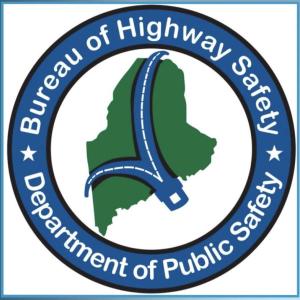October is Pedestrian Safety Month: Drivers urged to slow down, pedestrians urged to be seen
October brings beautiful fall leaves and the beginning of shorter hours of daylight. The Bureau of Highway Safety wishes to remind drivers to slow down and look for pedestrians. We also urge pedestrians to watch for drivers and make sure that you can BE SEEN!
According to the Governor’s Highway Safety Association’s most recent pedestrian fatality report, during the first half of 2024 in the United States, drivers struck and killed 3,304 people walking, which is a staggering increase of 48% since 2014.
In the past four years, 14 percent of Maine traffic-related fatalities were pedestrians.
“Pedestrian safety is a two-way street” says Director Lauren Stewart. “It is important for drivers to be extra cautious on roadways that have a lot of foot traffic. Pedestrians want to do everything they can to be more visible. Bright-colored clothing and flashlights save lives.”
The Maine Bureau of Highway Safety offers the following tips to help drivers and pedestrians to navigate Maine roadways safely.
Drivers:
• Use extra caution when driving in hard-to-see conditions.
• Follow the speed limit, especially around people on the street, around schools, and in neighborhoods where children are present.
• Drive sober.
• Always stop for pedestrians in crosswalks.
• Look for pedestrians everywhere and minimize blind spots.
• Never pass vehicles stopped at a crosswalk. There may be people crossing where drivers can’t see.
In addition to pedestrian safety month, October 19th-25th is Teen Driver Safety Week. The Maine Bureau of Highway Safety is stressing the importance of discussing safe driving habits with teens. Teen drivers need to know the rules of the road and other restrictions outlined in Maine’s graduated driver licensing law.
Traffic crashes are the leading cause of death for 15 to 19-year-olds. An average of 12 teen drivers per year have died on Maine roads over the past five years.
“The part of the brain responsible for reasoning and decision-making is not fully developed until the mid-twenties,” says Maine Health Teacher Jo Duke, which may cause a struggle for teens to weigh consequences and control impulses that leads to risk-taking, speeding, and distracted driving. People supervising and educating teens about driving have a responsibility to model safe driving behaviors and have discussions about choices that teen drivers make. Help teen drivers make smart choices on the road as they are gaining experience behind the wheel and help them understand that risky driving behavior can lead to fatal consequences.
Pedestrians:
• Wear reflective clothing.
• Do not assume drivers see you.
• Walk facing traffic.
• Do not walk distracted (phones/headphones/ear plugs).
The Maine Bureau of Highway Safety is asking teen drivers to Take 5 and pledge to practice safe driving habits before getting in a vehicle. Take the Pledge! For more information about teen driver safety, visit www.nhtsa.gov/road-safety/teen-driving. (See flyer attachment of MBHS press release for QR code)
Now that students are back to school, October 20-24 is School Bus Safety Week. The Maine Bureau of Highway Safety is urging drivers to slow down and be aware of school buses in their communities. School buses are one of the safest modes of transportation, but injuries and fatalities involving school buses do occur.
Nationally, nearly 40 percent of school-age children who died in school-bus-related crashes were pedestrians. Most fatalities involving school buses are caused by a driver illegally passing a stopped school bus.
Drivers have a legal responsibility to slow down and come to a complete stop when red lights are flashing and the stop-arm is extended on a school bus. Be aware of the Danger Zone! The school bus loading and unloading area is called the Danger Zone, which is anywhere on the bus where the bus driver can’t see the child.
These areas include:
• 10 feet in front of the bus, where the driver may be sitting too high to see a child • 10 feet on either side of the bus, where a child may be in the driver’s blind spots • Behind the school bus
For more information about school bus stop safety, please visit www.nhtsa.gov/road-safety/school-bus-safety#the-topic-bus-stop-safety.























